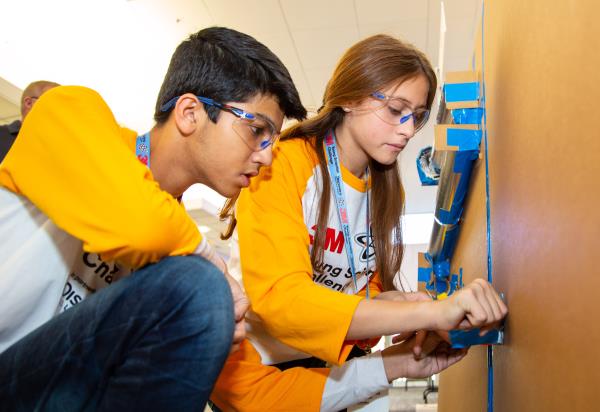The impact of scientific exploration has vastly shaped the world we live in, and in this challenging time, it has never been more relevant than it is today.
As families navigate the new reality of working and learning from home, there’s an opportunity to think creatively about how children learn and explore science. Parents and educators can turn to project-based activities to combine learning with fun, help kids stay curious and occupied while also providing an avenue to put their passion for problem solving to good use. In short, science exploration can positively fuel, nourish and encourage the great minds of tomorrow.
According to the 2019 3M State of Science Index, 59 percent of the world’s population believe scientific advancements will benefit future generations. Beyond paving the way toward vibrant career opportunities, a STEM education can shape a young person’s mind and transform their future in these fundamental ways:
1. Active learning instills confidence. Whether it’s positing a new hypothesis or learning a new programming language, the process of active learning required by STEM pushes students out of their comfort zone and creates an environment where taking calculated risks is encouraged. Becoming comfortable with taking risks to solve problems and learning from these outcomes builds confidence. These skillsets can be applied to any future challenges a student may need to navigate.
2. Problem solving encourages creativity. Who says STEM can’t be creative? Problem solving forces outside-the-box thinking and hones creativity. Without creativity, innovation is impossible, making this an invaluable quality that can translate into all areas of life and work, particularly in fields using cutting-edge STEM principles.
3. STEM helps students develop key life skills. From communication to decision-making to teamwork, STEM learning helps students develop practical skills inside and outside the lab. Fortunately, this learning can happen independently. Anyone can turn their home into a laboratory by visiting, youngscientistlab.com, a free resource offering science project ideas and step-by-step directions for grades K-8. Whether students collaborate or work independently, they’ll feel accomplished after finishing projects.
4. Young scientists can make an impact on tomorrow’s world. Educational science programs encourage students to think about tomorrow’s challenges today. Some programs even offer exciting opportunities for students to put their ideas and theories directly into practice. For example, the 3M Young Scientist Challenge, hosted in partnership with Discovery Education, offers students the chance to be named America’s Top Young Scientist. The national science competition for students in grades 5-8 gives young inventors a once-in-a-lifetime opportunity to work closely with a 3M scientist, compete for a $25,000 prize, and learn new skills.
Last year’s winner, aspiring microbiologist, Kara Fan, 14, invented a first aid liquid bandage using nano-silver technology to reduce the risk of superbug infections caused by antibiotic overuse. Fan is a great example of what can happen when science skills are applied to making a positive difference in the world.
“I entered the challenge because I wanted to show my invention of the nanosilver liquid bandage to more people. I think it is important for more people to be aware of the antibiotic-resistance bacteria crisis and do something about it,” says Fan, who worked with her 3M mentor for several months to refine her invention.
Now open, this year’s challenge asks students to identify a problem in one of six categories—health, safety, mobility, environment, energy consumption, or community—and come up with a unique innovation to improve lives for the future. To learn more, and for important dates and deadlines, visit YoungScientistLab.com/challenge.
STEM learning can shape students’ futures, and ultimately make communities safer and healthier. Be active, be bold, and explore opportunities outside the classroom that will instill a lifelong love of STEM learning. (StatePoint)

